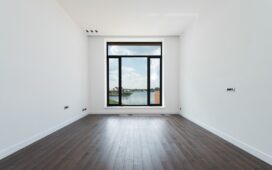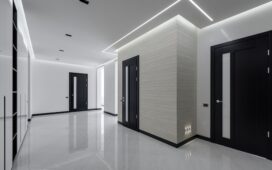Light Up Your Life: The Benefits of Adding a Skylight to Your Living Room

Are you sick of sitting in a dimly lit, gloomy living room? Would you like to improve the ambience of your room without having to make expensive renovations? If so, adding a skylight is the ideal answer for you. It will not only let in natural light and fresh air, but it will also offer a variety of additional advantages that may greatly enhance your quality of life. So bid adieu to dark interiors and get ready to brighten your house with our guide to the benefits of living room skylights.

What do skylights do?
A skylight is a window that is incorporated into the ceiling or roof and allows natural light to enter the house. Skylights are a cost-effective solution to increase a room’s brightness and ventilation. You may choose the ideal skylight to meet your demands from a wide variety that are offered.
There are several advantages to installing a skylight in your living room. First, it may make the space appear more spacious and brighter. By enabling natural light into the room during the day, it can also save energy expenses. Thirdly, if you ever decide to sell your house, it may increase in value.
Installing a skylight
The best method to add some elegance and brightness to your living room is to install a skylight. These are some instructions for mounting a skylight:
- Where your skylight should be placed? The south-facing side of your home is the best place for a skylight. This will guarantee that the skylight gets enough of daylight.
- Take measurements of the space where the skylight will be installed. Be careful you gauge the opening’s height and width.
- Create the skylight’s opening. To create the skylight aperture, use a circular saw. Make sure the opening is a little bit bigger than the actual skylight.
- Attach the flashing to the opening’s perimeter. Water leaks via the skylight aperture can be prevented by the flashing.
- Construct the actual skylight. After positioning the skylight, fasten it in place using screws or nails. Avoid over tightening the screws or nails to prevent damage to the skylight frame.
- Apply caulking around the sides of the skylight frame to help seal it against leaks. Before adding any form of covers or treatments to the interior of the window frame, let the caulking completely dry.
Various kinds of skylights
Skylights come in three major varieties: vented, fixed, and tubular. Each variety has advantages of its own that can increase the amount of light in your living space.
Skylights of the tubular shape are the most prevalent kind. They are made out of an oval or round tube that extends from the ceiling to the roof. To allow as much light as possible to enter, the tube is often constructed of transparent or translucent material. If you want to increase the natural light in your living room without raising your energy costs, tubular skylights are a fantastic solution.
The opening in the roof where fixed skylights are placed is caulked or flashed shut. They cannot be opened or closed, making them unsuitable for spaces with a lot of sunlight. Yet, they’re a fantastic option for spaces like basements or attics that require more light but receive little sunlight.

Similar to fixed skylights, vented skylights include a tiny aperture that can be opened and closed to let air flow through. They are therefore a wise solution for spaces like kitchens and bathrooms that are frequently exposed to the sun. In these spaces, moisture and mould growth can be lessened with the use of ventilated skylights.
A simple and efficient approach to add natural light to your house is by installing a skylight in your living room. It may boost the value of your home, provide a sense of openness, improve the air quality inside, and save energy bills. Skylights may also be employed as a distinctive design feature to set off your living space. All things considered, installing a skylight in your living room is a great investment that you won’t regret doing!








